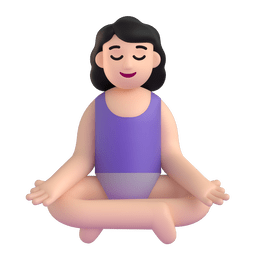The Art of Meditation: A Guide to Finding Inner Peace
2024-12-04
Meditation is a practice that nurtures mental clarity, emotional balance, and inner calm. While it may seem simple, meditating effectively requires guidance and consistency. In this article, we’ll explore the steps to a good meditation practice, address common challenges, and provide practical recommendations on how to make meditation a beneficial daily habit.

How to Meditate: Step-by-Step Guide
-
Find a Quiet Place: Choose a peaceful environment free from distractions. A calm setting allows your mind to focus and relax.
-
Set a Timer: Decide how long you want to meditate. Beginners can start with 5–10 minutes and gradually increase as they become comfortable.
-
Choose a Comfortable Position: Sit on a chair, cushion, or floor with your back straight and hands resting on your knees or lap. Avoid positions that strain your body.
-
Focus on Your Breath: Close your eyes, take deep breaths, and shift your attention to your inhalations and exhalations. Feel the rhythm of your breathing.
-
Let Thoughts Come and Go: If your mind wanders, gently bring your focus back to your breath. Avoid judging yourself—it’s natural for thoughts to arise.
-
Use a Mantra or Visualization (Optional): Repeat a calming word, phrase, or affirmation silently, or visualize a serene scene like a beach or forest.
-
End Gently: When your timer goes off, slowly open your eyes and take a moment to return to your surroundings before resuming your day.
Common Problems When Meditating
Meditation can be challenging, especially for beginners. Here are some common obstacles and tips to overcome them:
-
Restless Mind:
- Problem: Difficulty staying focused due to wandering thoughts.
- Solution: Gently redirect your attention to your breath each time your mind drifts.
-
Physical Discomfort:
- Problem: Feeling stiff or uncomfortable during meditation.
- Solution: Adjust your posture or use cushions and support for comfort.
-
Sleepiness:
- Problem: Falling asleep while meditating.
- Solution: Sit upright and meditate earlier in the day when you're more alert.
-
Impatience:
- Problem: Feeling bored or frustrated when results aren't immediate.
- Solution: Remind yourself that meditation is a practice, and its benefits grow over time.
How Long and How Often Should You Meditate?
-
Duration: Start with 5–10 minutes daily and gradually increase to 15–30 minutes as you build the habit.
-
Frequency: Daily meditation is ideal, but even 3–4 sessions a week can make a difference. Consistency is more important than duration.
What Makes a Good Place to Meditate?
A conducive meditation environment enhances the experience. Look for:
- Quietness: A peaceful spot where you won’t be interrupted.
- Comfort: Choose a space where you can sit comfortably without distractions.
- Natural Elements: Consider meditating outdoors or near plants for a calming effect.
- Personal Touch: Add items like a cushion, candle, or calming music to create an inviting atmosphere.
Conclusion
Meditation is a powerful tool for emotional and mental well-being, helping you manage stress, improve focus, and foster inner peace. Incorporating meditation into your daily routine is easier with tools like the My Emotion app, which allows you to set reminders and track your progress. Start small, stay consistent, and make meditation a lifelong habit to transform your mind and emotions for the better.


